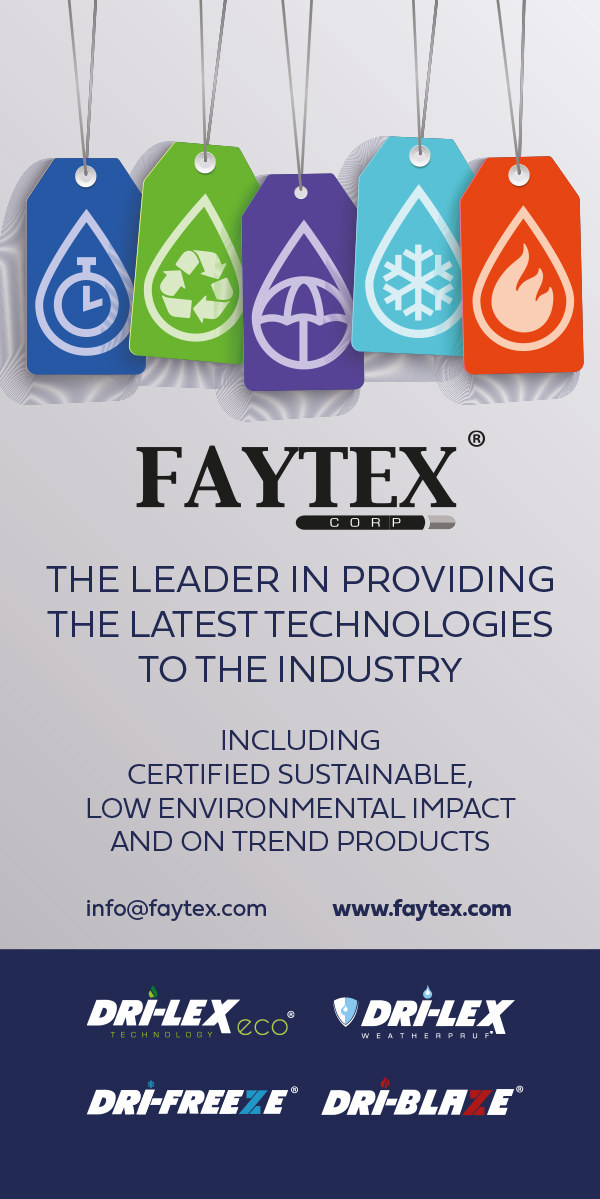HAPTIC textile coating for footwear

Much like the mobility industry, according to the Ellen MacArthur Foundation and Circular Fibres Initiative, the textile industry is a major greenhouse gas emitter and environmental polluter.
The good news is that it is now embarking on a sustainability revolution. Creating more environmentally friendly apparel is, however, particularly challenging for manufacturers of footwear, which is often made from polyethylene terephthalate (PET) and printed with polyurethane (PU) coatings to achieve the right performance, appearance and durability. In fact, there are two parallel challenges that need to be overcome.
Untangling the issues
First, in light of the growing pressure from regulators and consumers to make the fashion industry more sustainable, footwear producers urgently need PU coating resins with a less harmful environmental impact. More manufacturers are switching from solvent-borne to water-borne coatings in order to cut down dimethylformamide (DMF) emissions, which can harm both workers and the environment. Even in water-borne PU materials, however, sustainability credentials can vary from one solution to the next, making it all the more important to choose responsibly.
Second, as the trend for customised printed shoes takes hold in the fashion footwear market, manufacturers are seeking coating technologies that enable a high-quality appearance and long-lasting performance. Current technologies often fall short on both counts, but ensuring durability and aesthetic appeal while also delivering the important sustainability improvements the planet needs is no easy task. Finding a solution can only be achieved by combining innovative material technology with cutting-edge coating technology. The needs of Team Sonnenwagen provided the perfect opportunity for two textile companies to do exactly that.
Driving sustainability
Team Sonnenwagen, a group of around 50 dedicated students from RWTH Aachen University and Aachen University of Applied Sciences in Germany, is on a mission to accelerate sustainable mobility by designing and building super-efficient solar-powered cars. The team recently took part in the Bridgestone World Solar Challenge, a 3,000 km race through the Australian Outback, with the fourth generation of its Sonnenwagen: the Covestro Adelie, partially named after its long-term sponsor.
As a leading provider of premium polymers, Covestro believes that high performance plastics have a key role to play in future climate-neutral mobility. Its material solutions for Team Sonnenwagen’s solar cars are just one way in which it supports the team’s ambitions. When it came to developing 2023’s branded footwear for these sustainability-minded students, the company’s aim was to bring together fashionable design concepts with more sustainable PU coatings.
The textile coatings in question were Covestro’s water-borne INSQIN family of PU resins, with a CO2 footprint up to 45% lower than solvent-borne options. Not only had these materials already been used in Team Sonnenwagen’s vehicles, but they had also been a key part of a previous sustainable footwear project which succeeded in increasing circularity and reducing CO2 emissions in athletic footwear. Nevertheless, the company was determined to go even further, targeting an even more sustainable coating system for the team’s sports shoes.
The perfect pair
As any good team knows, collaboration is a fundamental pillar of progress and innovation, which is why Covestro’s first step was to find the right partner. That’s where Huafeng, a textile technology company specialising in polyurethane printing for footwear came in. The two companies had cooperated successfully in the past and, once again, they made a good combination.
The German company contributed its partly bio-based Impranil CQ DLS/1 PU dispersion (part of the INSQIN range). Huafeng’s added its new, fully water-borne Haptic Art textile coating system. 50% of the renewable content in the resulting coating came from the Impranil CQ solution. Improved sustainability was, however, not the only benefit of this coating collaboration.
Award-winning innovation
With its high solids content and thixotropic properties, the new system enables very high coating thicknesses to be achieved, making it ideal for producing striking 3D effects and detailed images on fabrics. These capabilities were put to good use by the selection of local artists with whom Huafeng worked to create some eye-catching painted designs for Team Sonnenwagen’s shoes.
Importantly, the coated images are said to have proved more than a match for standard tests on flexibility, adhesion, resistance to hydrolysis, washing and abrasion, all crucial properties for sports footwear, especially products headed to the Outback. The Haptic Art ink system went on to win the ISPO Best Product Award in 2023.
Not only did the shoes provided by Huafeng use Covestro’s more sustainable PU dispersion coating, the shoes themselves were also made from more sustainable materials. The shoe uppers consist of 100% recycled PET (rPET) yarns made from post-consumer waste plastic bottles by the recycling specialist Cyclone. Covestro says that using rPET results in a significantly reduced environmental impact in addition to the benefits of the new Haptic Art coating system used to print the finishing touches.
High-fashion with a lower carbon footprint
With the close collaboration and materials expertise of these industry partners, Team Sonnenwagen’s shoes are a perfect fit with its vision of a more sustainable mobility future. According to internal calculations, the partly bio-based Impranil CQ materials accounted for approximately 80g of the overall 260g fewer CO2e emissions generated per pair, compared to shoes made from conventional waterborne PU and virgin PET.
By enabling shoes with a lower environmental impact and no compromise on performance or appearance, the new waterborne Haptic textile coating system developed by Huafeng using the INSQIN PU dispersions looks to be an innovative solution for a complex challenge. One small step for Team Sonnenwagen could turn out to be a giant leap for more sustainable footwear.
The sports shoe that forms part of the new official equipment for Team Sonnenwagen provided by Huafeng using their new HAPTIC textile coating system. Fabrics for the shoe are based on Cyclone recycled polyethylene terephthalate (rPET) yarns derived from post-consumer plastic bottles.
CREDIT: HAUFENG












